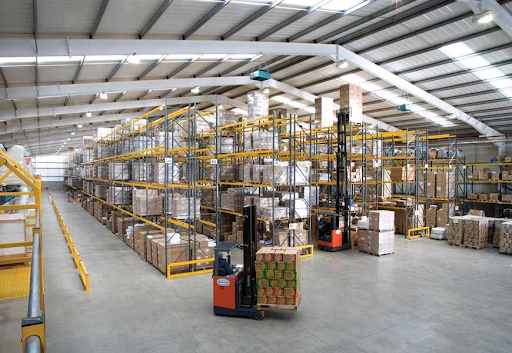From the beginning of design until the final punch list, a specific value estimation helps keep the entire all in sync: timetable, scope, and the price range. This is why the most innovative developers and builders frequently work with specialist construction estimation companies that use advanced tools and methods to predict costs with confidence. These companies use research, technology, and data to produce estimates that can withstand the effects of change and change.
As construction gets more complicated as well as the methods employed to calculate costs. The methods that worked in the past may not be able to offer the number of elements or speed required today. To stay competitive and accurate, Estimators are embracing more advanced solutions that provide extra clarity and are able to fit into the way of doing business.
Known the New Age of Estimating
Estimation has evolved. It’s not only about using units of expense and rectangular photo calculators. Today’s methods provide a layered approach that blends models, statistics, and collaboration. Cost plans today encompass everything of everything from the labor market to delays in supply chain processes. Therefore, estimators must stay updated, flexible, and technologically proficient.
3-D Models That Inform Budgets
One of the biggest changes in the estimation of creation is the use of Building Information Modeling (BIM). The 3-D digital models aid in the creation of detailed cost estimates in real-time, through the linking of the fabric and design requirements in one go to price figures. Instead of using simple numbers, estimators can see and quantify everything from foundations to fixtures.
BIM helps to identify early layout issues and reduces the likelihood of costly changes in the future. It also provides a common platform on which all mission groups – designers, owners, contractors, and designers–can collaborate, update songs, and review fees together.
Real-Time Data for Realistic Forecasts
A different approach is to make use of live-cost databases. These libraries’ virtual provide current market quotes for equipment, materials, and labour in specific areas. Estimators today do not depend on outdated spreadsheets or guesswork. Instead, they rely on current data and information to ensure that estimates are aligned with current market conditions.
This method helps to make more accurate forecasts, especially in sectors where fees fluctuate frequently. For instance, in periods of economic volatility or disruption to supply chain processes, getting access to current prices ensures that bids are competitive without compromising margins.
Historical Job Cost Analysis
Past performance is a reliable tool. A lot of teams rely on old task value data to guide future estimations. When comparing actual costs with the anticipated costs for previous projects, Estimators can identify characteristics of risk, inaccuracies, and risks. This analysis lets them make adjustments as well as improve the accuracy of the years.
This strategy is especially useful for routine assignments, inclusive of rental facilities, or colleges in which the charges are similar to each other. The lessons learned from tasks completed provide a basis for planning the future.
Specialized Services with Expert Knowledge
Even with the best technology, not every contractor has the resources or time to make unique estimates at their facility. This is why Construction Estimating Services are offered. These services provide specialized estimates to groups who are focused entirely on budgeting and taking off quantities.
Their specialization lets them stay ahead of the trends of their generation and gain insights specific to the area, and provide quick timeframes with no compromise on accuracy. If they are helping trendy architects, contractors as well and developers. These solutions are a great extension of the group that is assigned to.
Digital Takeoff Tools
Traditional takeoff strategies based on visible drawings and hand measurements have, for the most part, been replaced by digital tools. Software tools now permit estimators to simply click and drag around the drawings in PDF or CAD to calculate volume, regions, and quantities of cloth in minutes.
This helps reduce human error and can speed up time, especially for large or complicated tasks. The equipment can also provide rapid revisions if plans change mid-way, ensuring that estimates are up-to-date without having to start with a blank slate.
Collaborative Cloud Platforms
With teams working regularly in different locations, cloud-based structures for estimating are becoming increasingly popular. This technology permits real-time collaboration, centralized storage, and continuous sharing among estimators, customers, estimators, and teams of subject experts.
All the information you need in one place will mean less time spent and more transparency. Teams have access to updated drawings, revisions to the scope of work, and even cost breakdowns for tests from any location to keep everyone in sync and well-informed.
Final Validation Through Peer Review
Before submitting any estimate, teams that are performing at their peak conduct an internally-led peer review. This way, every other experienced manager or estimator examines the estimates as well as the assumptions and scopes in order to find errors or missing items.
The new method may seem simple, but it’s extremely effective. It guarantees that estimates are complete and fair. They are also founded on solid logic, particularly when stakes are extremely high or the construction is complicated.
Forecasting Costs Beyond Groundbreaking
Modern estimation isn’t only about how much it will cost to put in the flooring. It’s about knowing what the total cost of the project will be up to the time of handover. A trustworthy cost estimator can help forecast costs at every stage, from the beginning of construction to the punch list. This large-scale view gives stakeholders the confidence to proceed with their goals.
With the correct mix of data technology, equipment, and knowledge, today’s estimators aid the production team in gaining the ability to make decisions with greater clarity and agility. They transform estimates from static documents into living plans for achieving success in challenges.
Final Thoughts
Construction estimating has developed into a discipline that combines technology and industry knowledge. From using virtual equipment to collaborating with companies that specialize in construction estimation, developers today have more options than ever before to increase accuracy and minimize risk. When combined with the depth and performance offered by construction estimation tools today, these methods ensure that every greenback is carefully planned.




